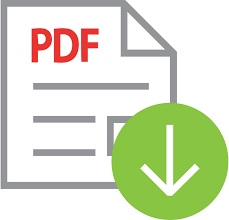The role of the principal as a leader, innovator and motivator in vocational high schools
 ), Ermita Ermita(2),
), Ermita Ermita(2), (1) Universitas Negeri Padang
(2) Universitas Negeri Padang
 Corresponding Author
Corresponding Author
DOI : https://doi.org/10.32698/01622
Full Text:
 Language : en
Language : en
Abstract
References
Alonderiene, R., & Majauskaite, M. (2016). Leadership style and job satisfaction in higher education institutions. International Journal of Educational Management.
Anderson, H. (2001). Postmodern collaborative and person‐centred therapies: what would Carl Rogers say? Journal of family therapy, 23(4), 339-360.
Andriani, S., Kesumawati, N., & Kristiawan, M. (2018). The influence of the transformational leadership and work motivation on teachers performance. International Journal of Scientific & Technology Research, 7(7), 19-29.
Apriana, D., Kristiawan, M., & Wardiah, D. (2019). Headmaster’s competency in preparing vocational school students for entrepreneurship. International Journal of Scientific & Technology Research, 8(8), 1316-1330.
Brookhart, S. M., & Chen, F. (2015). The quality and effectiveness of descriptive rubrics. Educational Review, 67(3), 343-368.
Cheng, A. Y., & Szeto, E. (2016). Teacher leadership development and principal facilitation: Novice teachers’ perspectives. Teaching and Teacher Education, 58, 140-148.
Day, C., Gu, Q., & Sammons, P. (2016). The impact of leadership on student outcomes: How successful school leaders use transformational and instructional strategies to make a difference. Educational administration quarterly, 52(2), 221-258.
Gill, J., & Arnold, P. (2015). Performing the principal: school leadership, masculinity and emotion. International Journal of Leadership in Education, 18(1), 19-33.
Haryono, S., Amrullah, N. I. H., & Surah, S. (2020). The Effect of Principal Leadership and Teacher Competence on Teacher Performance: The Role of Work Motivation. International Journal of Business Marketing and Management (IJBMM) Volume, 5, 09-14.
Komalasari, K., Arafat, Y., & Mulyadi, M. (2020). Principal’s Management Competencies in Improving the Quality of Education. Journal of Social Work and Science Education, 1(2), 181-193.
Krasnoff, B., Leong, M., & Siebersma, M. (2015). Leadership qualities of effective principals. Education Northwest, 1-10.
Kurniawan, A., & Syakur, A. (2017). The Correlation of Emotional Intelligence and Spiritual of Intelligence to Effectiveness Principals of Leadership. International Journal of Psychological and Brain Sciences, 2(1), 1-9.
Lazwardi, D. (2016). Peran Kepala Sekolah Dalam Meningkatkan Profesionalisme Guru. Al-Idarah: Jurnal Kependidikan Islam, 6(2).
Leithwood, K., Harris, A., & Hopkins, D. (2020). Seven strong claims about successful school leadership revisited. School leadership & management, 40(1), 5-22.
Louis, K. S., & Murphy, J. (2017). Trust, caring and organizational learning: the leader’s role. Journal of educational administration.
Meador, D. (2019). The role of the principal in schools. Thought Co.
Nellitawati, N. (2018). Motivation and innovation role of school’s principal in improving teacher professionalism. COUNS-EDU: The International Journal of Counseling and Education, 3(2), 48-56.
Player, D., Youngs, P., Perrone, F., & Grogan, E. (2017). How principal leadership and person-job fit are associated with teacher mobility and attrition. Teaching and Teacher Education, 67, 330-339.
Quin, J., Deris, A., Bischoff, G., & Johnson, J. T. (2015). Comparison of transformational leadership practices: Implications for school districts and principal preparation programs. Journal of Leadership Education, 14(3).
Sehgal, P., Nambudiri, R., & Mishra, S. K. (2017). Teacher effectiveness through self-efficacy, collaboration and principal leadership. International Journal of Educational Management.
Stein, K. C., Macaluso, M., & Stanulis, R. N. (2016). The interplay between principal leadership and teacher leader efficacy. Journal of School Leadership, 26(6), 1002-1032.
Sterret, W. L., Parker, M. A., & Mitzner, K. (2018). Maximizing Teacher Time: The Collaborative Leadership Role of the Principal. Journal of Organizational and Educational Leadership, 3(2), 1.
Steyn, G. (2015). The challenges facing women aspiring for school leadership positions in South African primary schools. Gender and Behaviour, 13(1), 6607-6620.
Ungar, T., & Marcus, M. (2016). Principal Innovator: The Other PI. Academic Medicine, 91(10), 1330.
 Article Metrics
Article Metrics
 Abstract Views : 0 times
Abstract Views : 0 times
 PDF Downloaded : 0 times
PDF Downloaded : 0 times
Refbacks
- There are currently no refbacks.

This work is licensed under a Creative Commons Attribution-NonCommercial-ShareAlike 4.0 International License.








